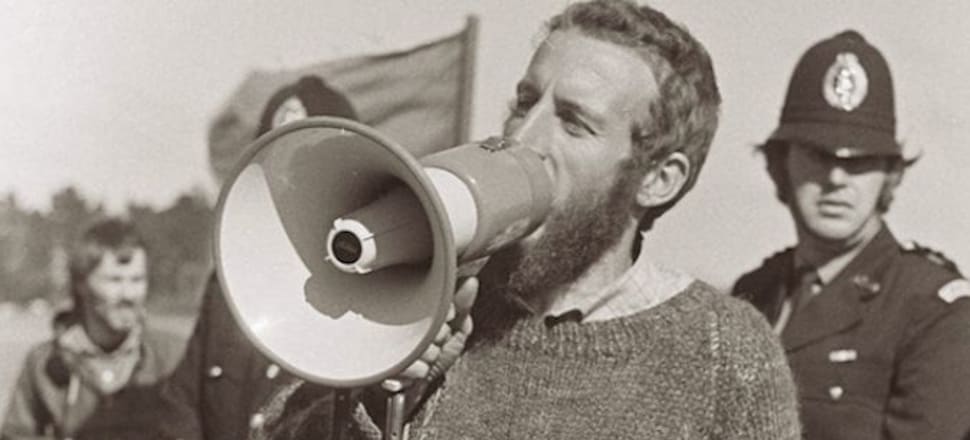
Legendary Peace Researcher Owen Wilkes Was a Target
Owen Wilkes (1940-2005) was a legendary New Zealand peace researcher and activist who devoted a considerable portion of his life to fighting against the creeping and corrupt presence of the U.S. military around the globe.
Not surprisingly, Wilkes found himself in the crosshairs of the New Zealand Security Intelligence Services (NZSIS) and the Central Intelligence Agency (CIA) which collaborated together to spy on him.
CovertAction Magazine (CAM) contributor Murray Horton, a founder in the 1970s with Wilkes of the Campaign Against Foreign Control of Aotearoa (CAFCA), a New Zealand anti-base peace group, has reviewed declassified SIS documents and found a cache of memos between their agents and the CIA.
The first of these memos referred to Wilkes as “the main organiser and activist in both CAFMANZ and CAFCINZ [other anti-base groups that were precursors to CAFCA].”[1]
These groups were considered at the time to be subversive because of their opposition to the U.S.’s use of New Zealand for strategic military facilities, including signals intelligence facilities that helped coordinate worldwide U.S. surveillance and military operations.[2]
The declassified intelligence documents indicate that the SIS kept an eye on any contacts that Wilkes had with Communists and groups such as the Progressive Youth Movement, which was considered to be a front for the Communist Party.
Considering his pronouncements as anti-American, a visit to the Soviet Embassy was noted. There was speculation that the Communist Party sought to recruit him, although his friends said that Wilkes never lined up with any “ism.”[3]
The SIS claims today that it needs to withhold many documents whose release would somehow be “likely to prejudice the security or defence of New Zealand or the international relations of the Government of New Zealand.”
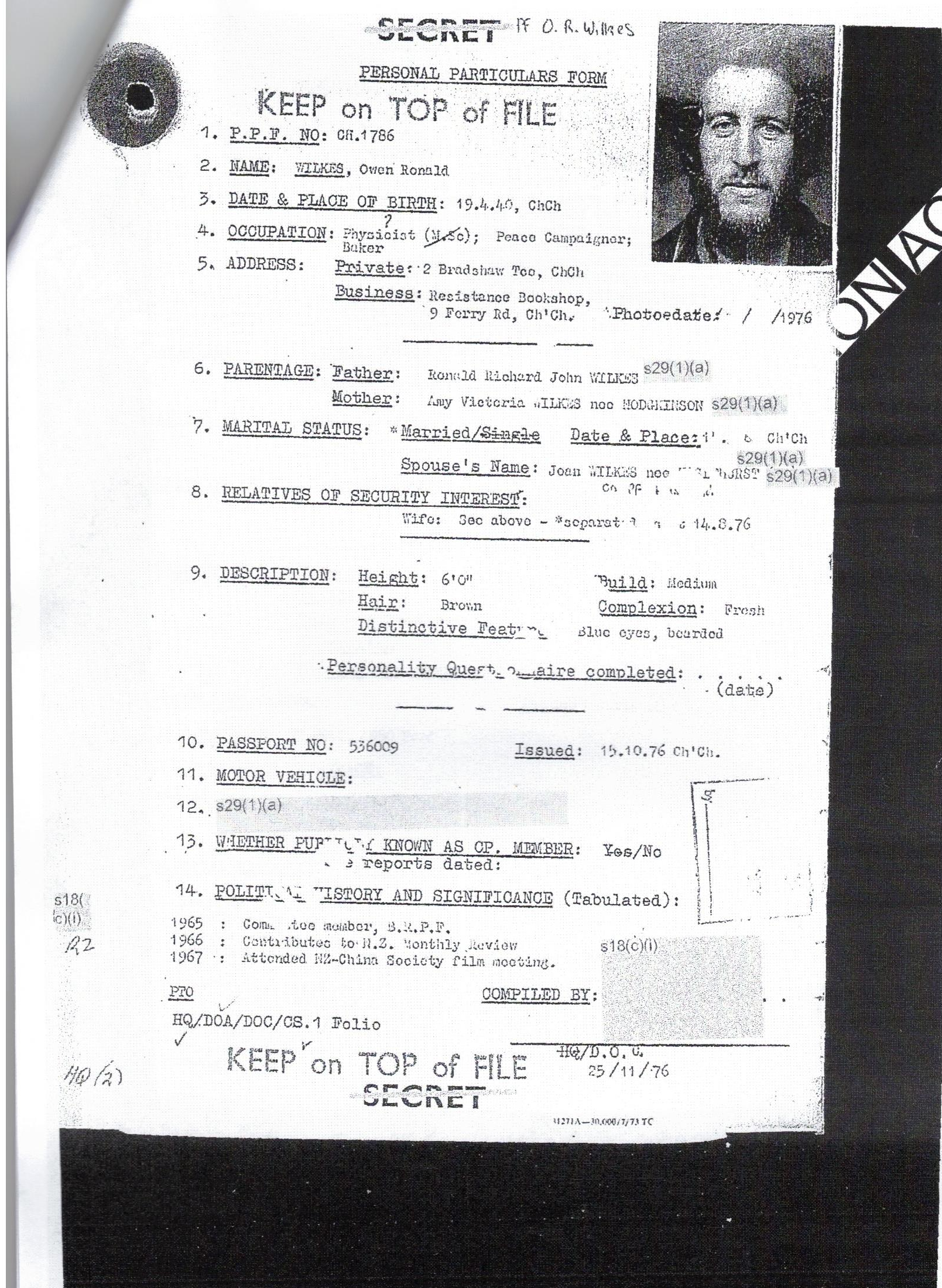
In May 2023 current SIS Director Andrew Hampton wrote a letter to Wilkes’ ex-wife stating that, “as a high-profile peace activist during a period when the USSR sought to use the legitimate peace movement to further its own geo-political objectives, Owen Wilkes came to NZSIS attention (as did you, purely by association). Mr. Wilkes was never, however, considered to be a threat to security.”

These comments are remarkable in acknowledging at once that Wilkes was never a threat to New Zealand’s national security, while at the same time implying guilt by association with the USSR—an old tactic of J. Edgar Hoover and conservative cold warriors whose purpose was to smear and discredit peace activists.
CIA Skullduggery in New Zealand
CAM has previously documented how the CIA concocted a scheme in the 1980s to undermine New Zealand’s labor government of David Lange, which adopted a nuclear-free policy and excluded U.S. warships from New Zealand’s ports.

The scheme involved the floating of a fraudulent loan to Māori members of the government in order to trigger white rage against them. Several of the businessmen who floated the loan worked for a CIA-front company called Bishop, Baldwin, Rewald, Dillingham and Wong (BBRDW)—which acted on the instructions of Honolulu CIA Station Chief Eugene Welch.
Among them were Robert Coleman Allen and James Haina, who were likely used by the U.S. government to create the Māori loans scandal and facilitate racial tension and a rift between the Māori and Labour Government which had traditionally been closely associated.
Newly declassified documents detail the CIA’s concerns that Lange’s anti-nuclear policy could spread throughout the Pacific.
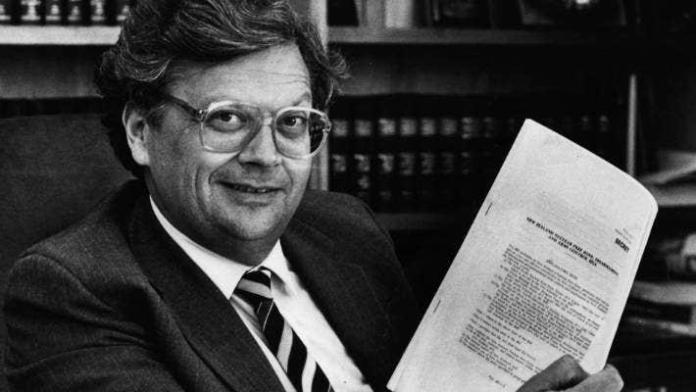
The CIA favored Sir Robert Muldoon, New Zealand’s conservative prime minister from 1975 to 1984, who was described in a CIA analysis as “second to none in his high regard for the U.S.,” who believed “more than his predecessors” that New Zealand needed the U.S. for security.
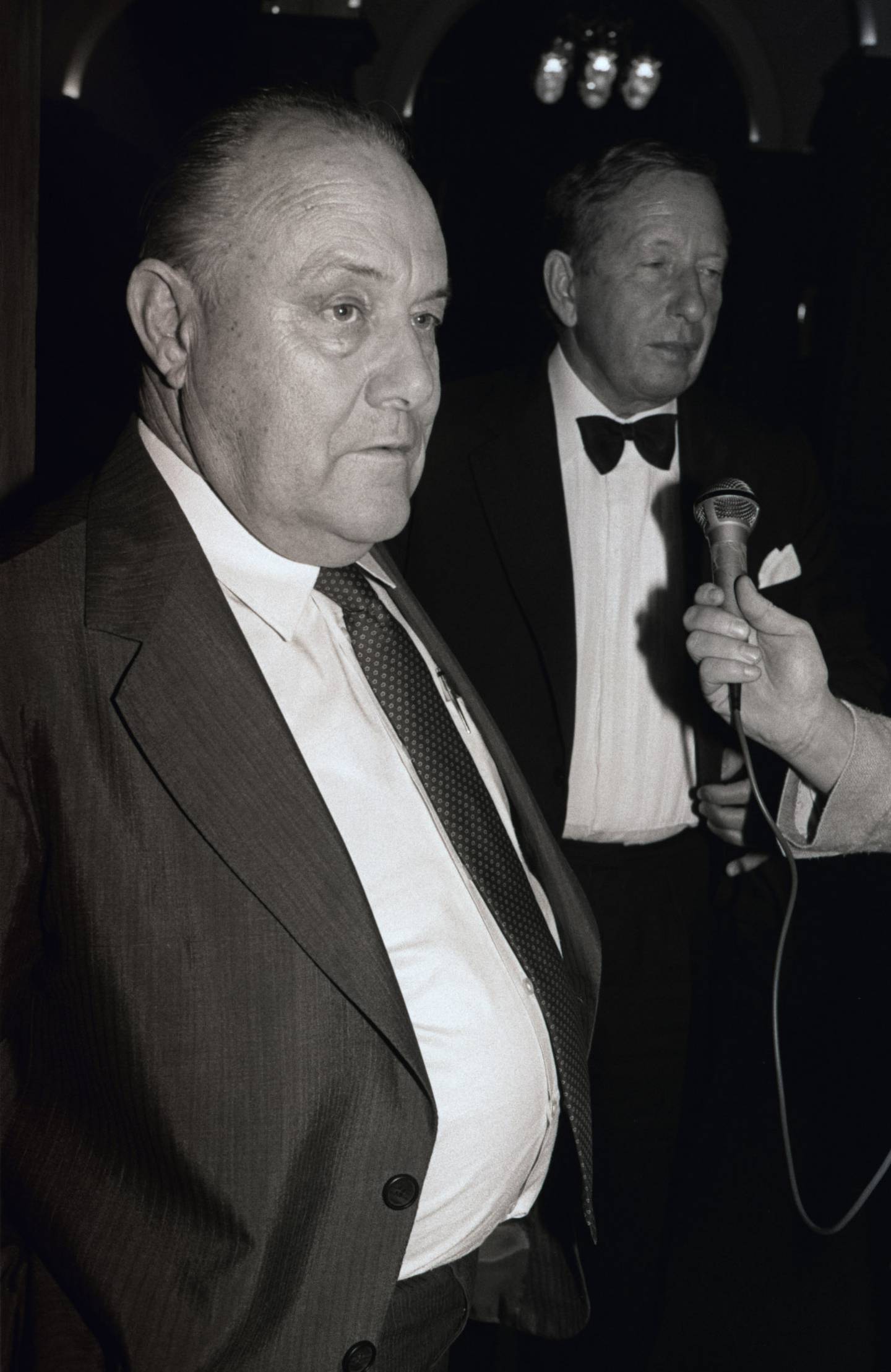
Walking Encyclopedia with Technical Expertise
Wilkes was a target of joint CIA-NZSIS surveillance because of his influence in raising public awareness about New Zealand’s tight integration into the American overseas network of military bases and empire.
Described as a “walking encyclopedia,” he was a highly knowledgeable technical expert on foreign military bases and facilities, especially including communications and signals intelligence facilities which the CIA and other intelligence services wanted to keep hidden.
As a researcher, Wilkes would spend hours poring through microfilmed U.S. government documents, and read the latest issue of Aviation and Space Technology. The SIS acknowledged that Wilkes had “a well-developed flair for ferreting out, from obscure but unclassified sources, what would appear to constitute classified information.”[4] Wilkes would also trek into remote areas to try to uncover the existence of secret military facilities. When he observed the facility or photographs of it, he had the capacity to interpret what they were used for.[5]

Wilkes got on the CIA’s radar after he exposed a network of signals intelligence stations that had been set up at the initiative of the U.S. in Norway with U.S. funding and included U.S. intelligence staff.[6]
Wilkes also exposed a secret U.S. spy base in Mindanao, Philippines. The information that Wilkes shared with the Philippines Senate led to a historic vote to remove all U.S. military bases from the Philippines in 1991 ending 470 years of foreign military bases in the country.[7]
“Most Important Foreign Base”
In the early 1980s, Wilkes wrote an exposé on a secret radio eavesdropping station in the Manawatu region known as Tangimoana, which Wilkes called “Our Most Important Foreign Base.” Despite official proclamations to the contrary, Wilkes was emphatic that the facility was really a foreign military base, built to U.S. specifications and run according to U.S. instructions.
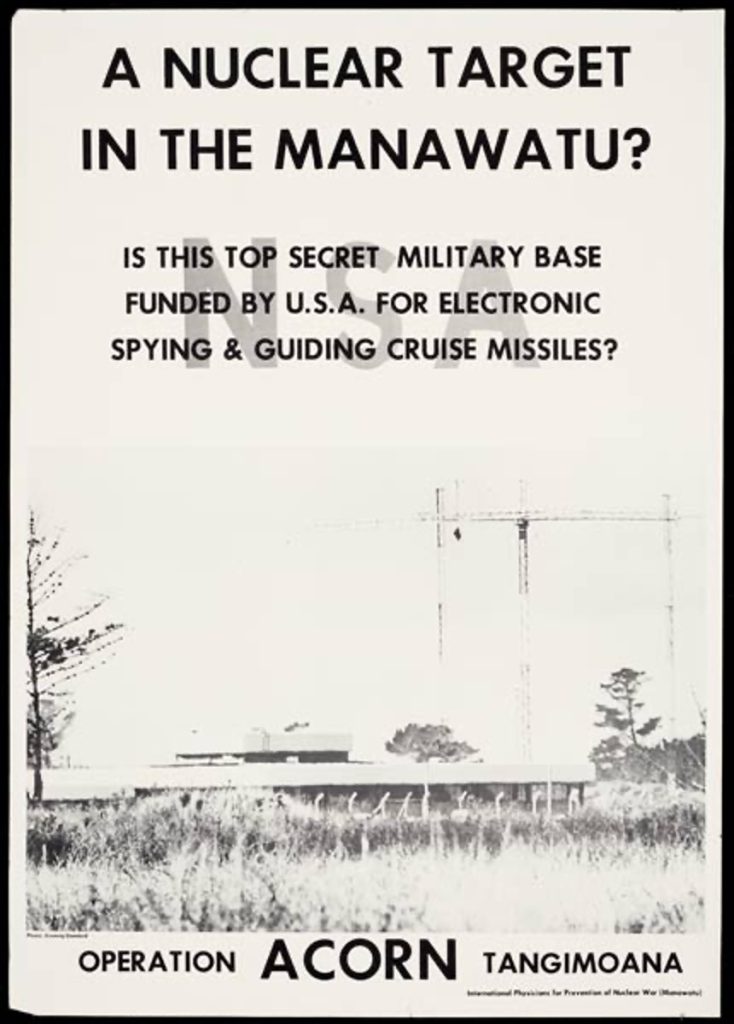
Wilkes had become familiar with similar electronic eavesdropping facilities from his time as a researcher with the Peace Research Institute Oslo (PRIO) in the late 1970s and had no doubt that the spider web-like Tangimoana antenna was part of the network.
He believed that the facility was probably cooperating with similar bases in Australia and contributing precise information about vessel movements—including Soviet ships across the Pacific—to the U.S. Naval Ocean Surveillance Information System (NOSIS).[8]
Wilkes warned in an article in Peacelink magazine that the project of which the eavesdropping facility was associated “integrates us much more closely into U.S. war fighting strategies than does mere membership in ANZUS or our hosting of nuclear warships. Day after day we are feeding intelligence data to the U.S., where we have little or no control how it is used, either in peacetime or in war…Do we want to provide intelligence data which helps give the U.S. the confidence that it can start, fight and win a nuclear war?”[9]
According to Wilkes, the agreement under which New Zealand played its part in collecting signals intelligence was secret—almost nobody knew about a post-World War II pact that formalized the cooperation of the U.S., Britain, Australia, Canada and New Zealand in the Five Eyes, let alone what it was for.
Wilkes wrote that the significance of the 1984 Tangimoana exposé—in which the government revealed for the first time the existence of a foreign military facility on New Zealand’s soil—cannot be overestimated: It was the opening salvo in the critical campaign to reveal New Zealand’s secret intelligence links and raise the challenge they posed to our sovereignty.”[10]
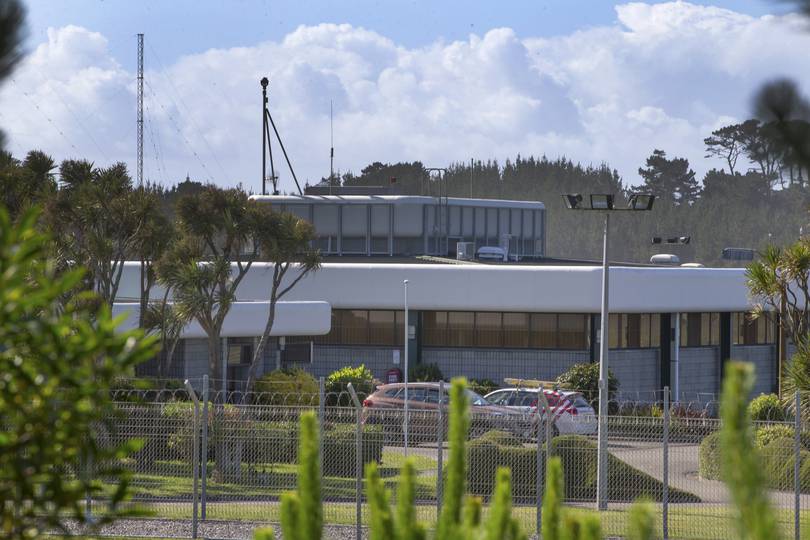
In a mocking gesture during protests against the Tangimoana facility, Wilkes wore a red cap inscribed “KGB agent.”[11] This sent a message of defiance to government authorities who were as blinded by the narrow-minded political dogma of the Cold War as their heirs are today.
Trying to Prevent New Zealand from Becoming an Expendable Portion of the U.S. Military Empire
Wilkes’ involvement in peace activism dated back to 1968 when he was part of protests supported by three future prime ministers that helped block the U.S. Navy’s construction of a transmitter station in New Zealand under Operation Omega.
Omega was to function as part of the U.S.’s global navigation system (precursor to GPS) and would assist the U.S. Navy in carrying out submarine surveillance and warfare.[12]

In an article for the New Zealand Methodist, Wilkes suggested that there be a referendum on Omega and if sufficient people wanted to shelter under the U.S. nuclear umbrella, then New Zealand should become like Hawai’i, an overseas state of the Union. That way “we would at least have voting rights and representation rather than being an ‘expendable portion of the United States military empire.’”[13]
Building off the momentum from the Omega protests, Wilkes emerged as a key leader of annual protests which took place at New Zealand’s different bases in the South Island—Woodbourne (1971), the U.S. Air Force observatory atop Mt. John in McKenzie Country (1972) and the U.S. Navy and Air Force Transport base at Christchurch Airport (1973), which still exists.[14]
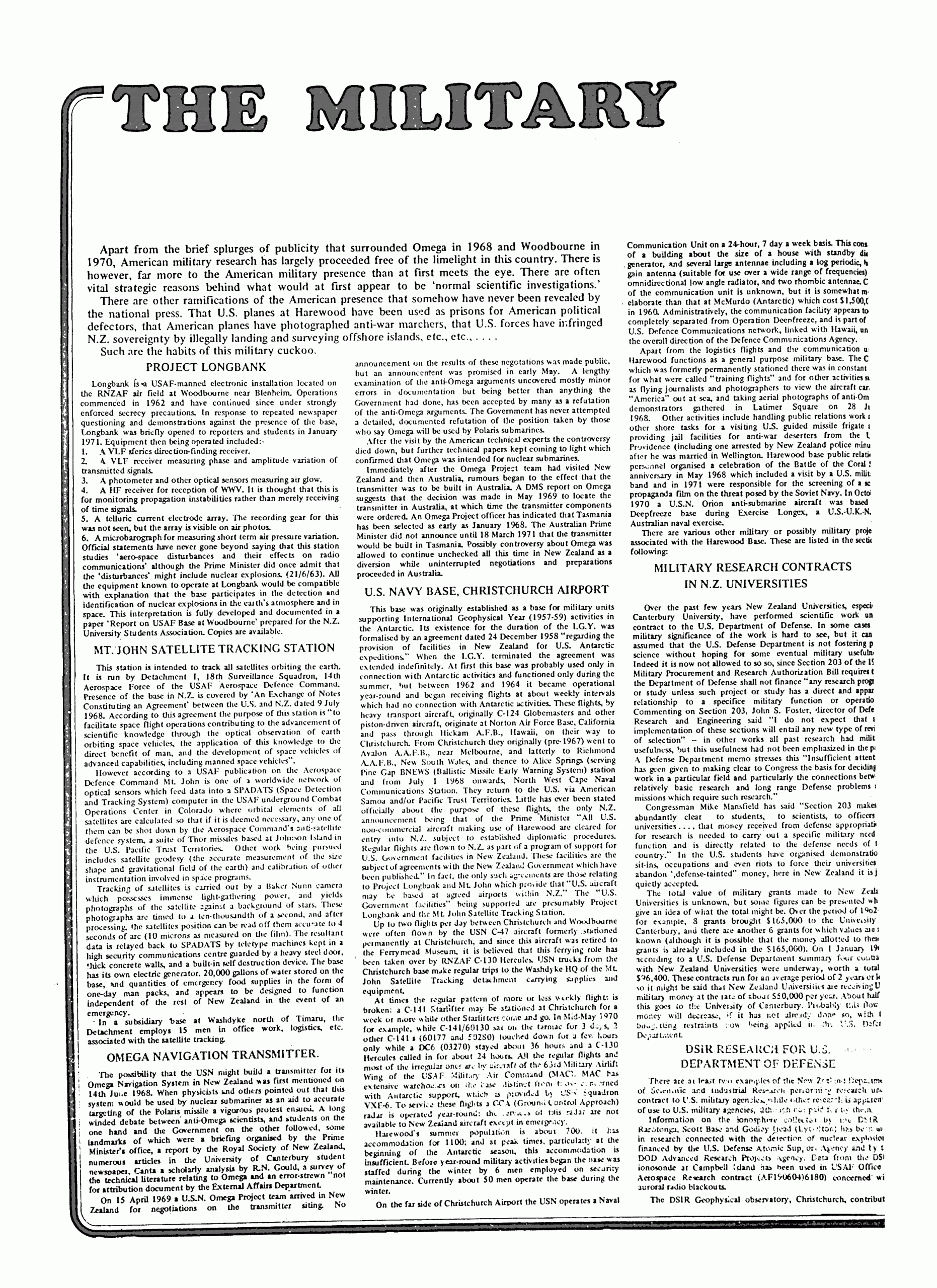
More than a decade later, Wilkes and Murray Horton were arrested for protesting against the U.S. military transport base at Christchurch Airport, which was located near a military communications facility just outside the city.
Waihopai Spy Base
In the late 1980s, Wilkes was a key figure leading protests outside the Waihopai spy base—a satellite communications monitoring station in the Waihopei Valley near Bleinheim, whose construction was authorized by David Lange—in spite of Lange’s anti-nuclear policy.
Waihopai was identified as being part of ECHELON, a worldwide network of signals interception facilities run by the UKUSA consortium of intelligence agencies, which shares global electronic and signals intelligence among the intelligence agencies of the US, UK, Canada, Australia and New Zealand—who are part of a pact known as The Five Eyes.
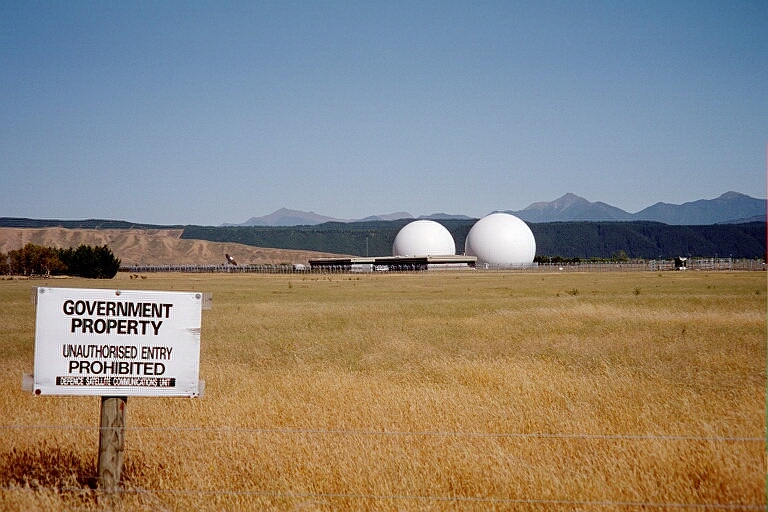
Wilkes wrote a definitive background paper on the spy base after its construction, warning that it would be spying on other countries’ ships, aircraft and submarines as well as spying on communications emanating from New Zealand’s Pacific neighbors.
Wilkes wrote that, “while Tangimoana implicates us in nuclear-war preparations, Waihopai implicates us in undermining the privacy, security, independence and sovereignty of our neighbors in the South Pacific.”[15]
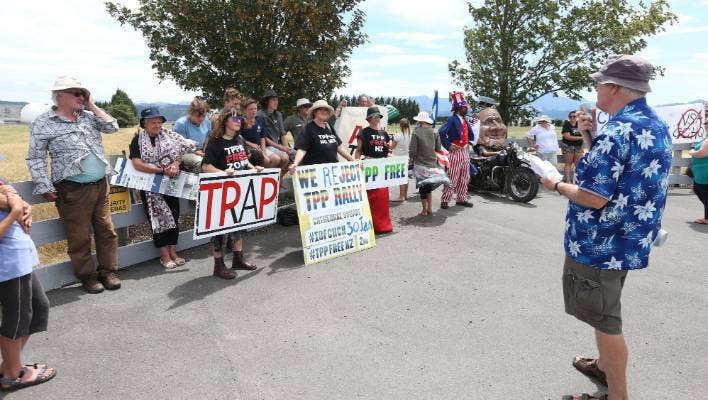
Peacemonger
A new book about Wilkes’ life entitled Peacemonger provides a tribute to Wilkes and his life-long commitment to peace research and activism.

Born to small shopkeepers in the Christchurch suburb of Beckenham in 1940, Wilkes studied geology and archaeology at the University of Canterbury.
In the summer of 1962, he carried out fieldwork as an entomologist in Antarctica for a project supported by and indirectly benefiting the U.S. Navy. At this time, he came to see how Antarctica was being used as a giant military training ground in the Cold War.[16]
Wilkes’ political radicalization was further fueled by his participation in an archaeological expedition in the sub-tropical Kermadec Islands that he discovered was part of a U.S. military germ warfare project.
By 1968, with the Vietnam War reaching its bloody apex, Wilkes became committed to researching and exposing the offshore facilities of the U.S. war machine in his own country, elsewhere in the Pacific and further afield.
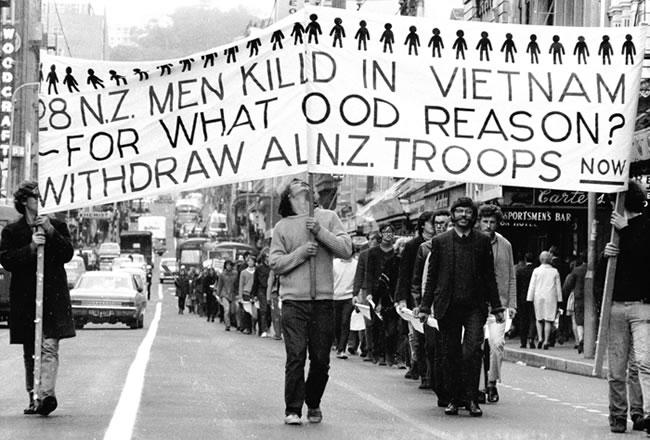
He warned about the pervasiveness of militarism in the Pacific, even in its remotest corners, stating that the Big Powers used the region as “the backside of the globe, epitomised by tiny Johnson Atoll west of Hawaii where the U.S. military does “anything too unpopular, too dangerous and too secret to do elsewhere.”[17]
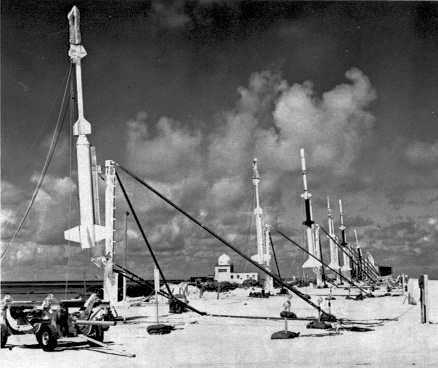
A hippie who lived a Spartan lifestyle and loved the outdoors, Wilkes worked for much of the 1970s as a researcher in Norway and Sweden. There he helped reveal the presence and purpose of foreign military installations, some of them part of a worldwide network of nuclear weapon command-and-control systems.[18]
One of the books that he published on U.S.-financed electronic intelligence stations in Norway was titled Uncle Sam’s Rabbits. The governing authorities in Sweden and Norway did not find the title funny. They accused Wilkes and his co-author, Nils Petter Gleditsch, of jeopardizing national security—even though they had relied on open-source material. The two received suspended sentence and Wilkes was expelled from Sweden, with the CIA monitoring the case.[19]
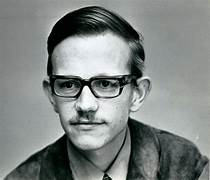
Wilkes’ influence and skill as a peace researcher and activist ultimately made him a target for government intelligence agencies committed to upholding the American military base structure that has resulted in endless wars.
By the 1990s, Wilkes had burned out of the peace movement and retreated to private life before tragically committing suicide in 2005.
His legacy today lives on as an inspiration to younger generations who will inevitably incur the wrath of the same dark forces that shadowed him if they are as successful in helping to educate and mobilize people for peace as he was.

-
Murray Horton, “The Anti-Bases Campaign,” in May Bass and Mark Derby, eds., Peacemonger: Owen Wilkes: International Peace Researcher, (Auckland: Raekaihau Press, 2022), 63. ↑
-
Maire Leadbeater, “Owen Wilkes and the Security State,” in Bass and Derby, Peacemonger, chapter 4; Murray Horton, “SIS Spied On CAFCA For Quarter Of A Century,” http://www.converge.org.nz/watchdog/20/06.htm. ↑
-
Leadbeater, “Owen Wilkes and the Security State,” in Bass and Derby, eds., Peacemonger, 70; Murray Horton, “Owen Wilkes’ SIS File: Spies Play Hard to Get,” http://www.converge.org.nz/watchdog/24/11.htm. The NZ SIS monitored Wilkes’ international mail after intercepting it from Customs. They also tracked his activities in the Philippines where he helped reveal a secret U.S. military facility in Mindanao. One declassified SIS document specifies that Wilkes was a “vocal critic of the New Zealand intelligence community…The most recent report is from 1989 and its conclusion is…privately and in two or three published articles Wilkes has expressed some criticism of Soviet policies (for example the USSR’s test firing of ICBMs [intercontinental ballistic missiles] into the Pacific Ocean) but the majority of his pronouncements are anti-American. Wilkes does not have close contact with the Soviet Mission in New Zealand and, as far as is known, he has made only one trip to the Soviet bloc…There is no evidence that Wilkes is or has been a Soviet agent involved in illegal intelligence activity. There is no evidence either that he is or has been an agent of influence under Soviet direction.” ↑
-
Nicky Hager, “The Wilkes How-To-Guide to Public Interest Researching,” in Bass and Derby, eds., Peacemonger, 138, 139; Murray Horton, “Owen Wilkes’ SIS File: A Bit More Released, A Decade After First Smidgen,” http://www.converge.org.nz/watchdog/50/09.html ↑
-
David Robie, “Exposing Foreign Militarism on the ‘Backside of the Earth,’” in Bass and Derby, eds., Peacemonger, 122, 123. ↑
-
Nicky Hager, “The Wilkes How-To-Guide to Public Interest Researching,” in Bass and Derby, eds., Peacemonger, 138, 139. ↑
-
Leadbeater, “Owen Wilkes and the Security State,” in Bass and Derby, eds., Peacemonger, 79. ↑
-
Horton, “The Anti-Bases Campaign,” in Bass and Derby, eds., Peacemonger, 55. ↑
-
Ibid., 56. ↑
-
Idem.. ↑
-
Idem. ↑
-
Ken Ross, “Omega 1968—A ‘Top Sacred’ File Note,” in Bass and Derby, eds., Peacemonger, 30; Leadbeater, “Owen Wilkes and the Security State,” in Bass and Derby, Peacemonger, 71. The transmitter was subsequently built in Australia. Wilkes had found information in a U.S. government report to confirm that the transmitter was commissioned to meet the needs of ballistic missile submarines. He found that it would allow U.S. hunter-killer submarines to work in coordination with Orion long-range aircraft, anti-submarine helicopters and ships. ↑
-
Maire Leadbeater, “Omega Campaign of 1968-69: An Important and Well-Earned Victory, Flaws Aside,” http://www.converge.org.nz/watchdog/49/16.html. ↑
-
Horton, “The Anti-Bases Campaign,” in Bass and Derby, eds., Peacemonger, 47. ↑
-
Ibid., 60. ↑
-
The militarization of Antarctica was carried out in violation of the 1961 Antarctica Treaty in which all measures of a military nature were supposed to be banned. Wilkes also observed the adverse environmental consequences from the lone nuclear reactor in Antarctica, known as “Nukey Poo.” ↑
-
Hager, “The Wilkes How-To-Guide to Public Interest Researching,” in Bass and Derby, eds., Peacemonger, 146. ↑
-
Mark Derby, “Introduction,” in Bass and Derby, eds., Peacemonger, 14; Robert Mann; “Owen in Antarctica,” in Bass and Derby, eds., Peacemonger, 17. ↑
-
Wilkes was involved in the revival of the Organization to Abolish the Security Intelligence Service, which was first established in 1972. He wrote for publications that exposed the abuses of the intelligence agencies, right-wing political maneuvering and the clandestine infrastructure of the Cold War. ↑
CovertAction Magazine is made possible by subscriptions, orders and donations from readers like you.
Blow the Whistle on U.S. Imperialism
Click the whistle and donate
When you donate to CovertAction Magazine, you are supporting investigative journalism. Your contributions go directly to supporting the development, production, editing, and dissemination of the Magazine.
CovertAction Magazine does not receive corporate or government sponsorship. Yet, we hold a steadfast commitment to providing compensation for writers, editorial and technical support. Your support helps facilitate this compensation as well as increase the caliber of this work.
Please make a donation by clicking on the donate logo above and enter the amount and your credit or debit card information.
CovertAction Institute, Inc. (CAI) is a 501(c)(3) non-profit organization and your gift is tax-deductible for federal income purposes. CAI’s tax-exempt ID number is 87-2461683.
We sincerely thank you for your support.
Disclaimer: The contents of this article are the sole responsibility of the author(s). CovertAction Institute, Inc. (CAI), including its Board of Directors (BD), Editorial Board (EB), Advisory Board (AB), staff, volunteers and its projects (including CovertAction Magazine) are not responsible for any inaccurate or incorrect statement in this article. This article also does not necessarily represent the views the BD, the EB, the AB, staff, volunteers, or any members of its projects.
Differing viewpoints: CAM publishes articles with differing viewpoints in an effort to nurture vibrant debate and thoughtful critical analysis. Feel free to comment on the articles in the comment section and/or send your letters to the Editors, which we will publish in the Letters column.
Copyrighted Material: This web site may contain copyrighted material the use of which has not always been specifically authorized by the copyright owner. As a not-for-profit charitable organization incorporated in the State of New York, we are making such material available in an effort to advance the understanding of humanity’s problems and hopefully to help find solutions for those problems. We believe this constitutes a ‘fair use’ of any such copyrighted material as provided for in section 107 of the US Copyright Law. You can read more about ‘fair use’ and US Copyright Law at the Legal Information Institute of Cornell Law School.
Republishing: CovertAction Magazine (CAM) grants permission to cross-post CAM articles on not-for-profit community internet sites as long as the source is acknowledged together with a hyperlink to the original CovertAction Magazine article. Also, kindly let us know at info@CovertActionMagazine.com. For publication of CAM articles in print or other forms including commercial internet sites, contact: info@CovertActionMagazine.com.
By using this site, you agree to these terms above.
About the Author

Jeremy Kuzmarov holds a Ph.D. in American history from Brandeis University and has taught at numerous colleges across the United States. He is regularly sought out as an expert on U.S. history and politics for radio and TV programs and co-hosts a radio show on New York Public Radio and on Progressive Radio News Network called “Uncontrolled Opposition.”
He is Managing Editor of CovertAction Magazine and is the author of six books on U.S. foreign policy, including Obama’s Unending Wars (Clarity Press, 2019), The Russians Are Coming, Again, with John Marciano (Monthly Review Press, 2018), Warmonger. How Clinton’s Malign Foreign Policy Launched the U.S. Trajectory From Bush II to Biden (Clarity Press, 2023); and with Dan Kovalik, Syria: Anatomy of Regime Change (Baraka Books, 2025).
Besides these books, Kuzmarov has published hundreds of articles and contributed to numerous edited volumes, including one in the prestigious Oxford History of Counterinsurgency .
He can be reached at jkuzmarov2@gmail.com and found on substack here.


